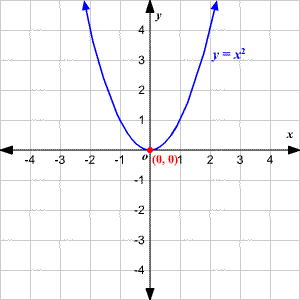What is the definition of FOIL and what is it used for.
The FOIL definition stands for F- First term O- Outer term I- Inside term L- Last term and it is used for binomial problems and area problems.
What is 1/2x = 6
This problem would be x = 12. This would be the solution because of the fact that ll you would do is multiply the denominator by 6 and get 12.
Where is the Axis of Symmetry?
The Axis of Symmetry is placed in the middle of the parabola.
What is a transformation?
A transformation is a shape being controlled to move around the graph or coordinate plane.
What is exponential decay and what is the function to solve equations involving exponential decay.
Exponential decay is the rate of how something decreases and the formula to solve them is F(k)= a(1-r) to the power of k.
10 more than twice a number. Explain your answer.
2x + 10 because the 10 is being added to
"twice a number" and twice a number is 2x beause we dont know what the number is it turns into a variable, so the equation will be set up like this.
x-9=5
The solution would be x = 14 because the only thing you would do is add the 9 to the negative 9 and the positive 5 because what you do on one side you do to the other side.
What does a opened upward parabola look like?

What is function notation? Give an example with your explanation.
Function notation is a way of showing how the equation is shown likewise F-stands for the function (x)- stands for the input value and 5x- stands for the value you would input the "(x)" value into to solve your problem. It would look like this all together: F(x)= 5x.

What you would do is first find out what the formula is and then input what you see in that formula, proceed to solve the problem after you have input all of the numbers that you need to input in the equation then you should have the fraction -18/2 which would simplify as -9/1.
What is 4 to the power of 7. Show your work.
16384. What your paper should look like is that you should have multiplied 4 times 4, 7 times.
What is domain and range and what are all the other names for domain.
You can define the domain as the x variable or the set of all input values but it has other names such as, the input,x- axis, zeros,roots, and independent variable.
How does the Parabola look and what are things that relates to it.
The Parabola is a U-shaped line things that relates to it is vertex, axis of symmetry, this is also where "zeros" were introduced to us and lastly we were exposed to a new function which was y= x squared plus a number and y=(x+ or - a number) squared.
What is the recursive formula?
a 1 = a n-1 + d.
What did our teacher want us to remember about linear functions.
She wanted us to remember that linear has the root word "LINE" so she wanted us to remember that a linear function will always be a LINE.
What is the square root of 80? Simplify your answer.
The answer is 4 to the square root of 5.
Substitution -3x-3y=3
y=-5x-17
The answer will be x = -4
What is a Quadratic Equation? Inform me on what is the formula for a quadratic equation as well.
A quadratic equation is a second order equation written as ax2 + bx + c = 0 where a, b, and c are coefficients of real numbers and a ≠ 0.
Erin was pushed just once on a swing. Erin moves a distance of 20 feet the first swing, and then 80% as much as the previous swing for each after. Which of the following sequences expresses the distance Erin travels "n" swings after the first?
a n = 20(0.80)^n because in the formula for geometric sequences it shows a n = a 1 (r)^n-1.
X F(x) 2< x < 6
0 20
2 30
4 40
6 50
8 60
10 70
The answer is 5 because you will have to simplify after you get your fraction 20/4
What is 8 to the square root of 5 plus 10 to the square root of 20? Simplify your answer.
The answer is 28 to the square root of 5.
What would the inequality 5 is greater than or equal to x mean?
This would mean x is either equal to 5 or could be any number that's less than 8.
What's the steps to solving a Vertex to Standard form?
Expand
FOIL
Combine like terms
Distribute
Combine like terms
Arithmetic Sequences:
What is the 81st term of 24, 11, and -2...
a n = a 1 + (n-1)d
a 81 = 24+ (81-1)(-13)
a 81 = 24+(80)(-13)
a 81 = -1016
−x2−7x+20
−8≤x≤0.
Find the Average Rate of Change.
The Average Rate of Change is 1. You solve by using the formula f(x2) - (fx1) divided by x2 - x1.